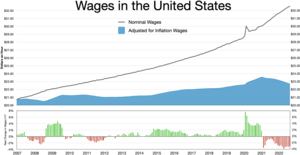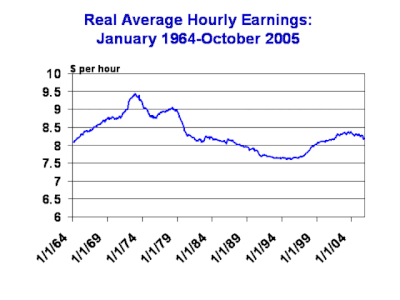In the United States, a 401(k) plan is an employer-sponsored, defined-contribution, personal pension (savings) account, as defined in subsection 401(k) of the U.S. Internal Revenue Code. Periodic employee contributions come directly out of their paychecks, and may be matched by the employer. This legal option is what makes 401(k) plans attractive to employees, and many employers offer this option to their (full-time) workers. 401(k) payable is a general ledger account that contains the amount of 401(k) plan pension payments that an employer has an obligation to remit to a pension plan administrator. This account is classified as a payroll liability, since the amount owed should be paid within one year.
In the United States, a 403(b) plan is a U.S. tax-advantaged retirement savings plan available for public education organizations, some non-profit employers (only Internal Revenue Code 501(c)(3) organizations), cooperative hospital service organizations, and self-employed ministers in the United States. It has tax treatment similar to a 401(k) plan, especially after the Economic Growth and Tax Relief Reconciliation Act of 2001. Both plans also require that distributions start at age 72 (according to the rules updated in 2020), known as Required Minimum Distributions (RMDs). Distributions are typically taxed as ordinary income.
In law, vesting is the point in time when the rights and interests arising from legal ownership of a property are acquired by some person. Vesting creates an immediately secured right of present or future deployment. One has a vested right to an asset that cannot be taken away by any third party, even though one may not yet possess the asset. When the right, interest, or title to the present or future possession of a legal estate can be transferred to any other party, it is termed a vested interest.

The Employee Retirement Income Security Act of 1974 (ERISA) is a U.S. federal tax and labor law that establishes minimum standards for pension plans in private industry. It contains rules on the federal income tax effects of transactions associated with employee benefit plans. ERISA was enacted to protect the interests of employee benefit plan participants and their beneficiaries by:
Universal life insurance is a type of cash value life insurance, sold primarily in the United States. Under the terms of the policy, the excess of premium payments above the current cost of insurance is credited to the cash value of the policy, which is credited each month with interest. The policy is debited each month by a cost of insurance (COI) charge as well as any other policy charges and fees drawn from the cash value, even if no premium payment is made that month. Interest credited to the account is determined by the insurer but has a contractual minimum rate. When an earnings rate is pegged to a financial index such as a stock, bond or other interest rate index, the policy is an "Indexed universal life" contract. Such policies offer the advantage of guaranteed level premiums throughout the insured's lifetime at a substantially lower premium cost than an equivalent whole life policy at first. The cost of insurance always increases, as is found on the cost index table. That not only allows for easy comparison of costs between carriers but also works well in irrevocable life insurance trusts (ILITs) since cash is of no consequence.
The 457 plan is a type of nonqualified, tax advantaged deferred-compensation retirement plan that is available for governmental and certain nongovernmental employers in the United States. The employer provides the plan and the employee defers compensation into it on a pretax or after-tax (Roth) basis. For the most part, the plan operates similarly to a 401(k) or 403(b) plan with which most people in the US are familiar. The key difference is that unlike with a 401(k) plan, it has no 10% penalty for withdrawal before the age of 55. These 457 plans can also allow independent contractors to participate in the plan, where 401(k) and 403(b) plans cannot.

A retirement plan is a financial arrangement designed to replace employment income upon retirement. These plans may be set up by employers, insurance companies, trade unions, the government, or other institutions. Congress has expressed a desire to encourage responsible retirement planning by granting favorable tax treatment to a wide variety of plans. Federal tax aspects of retirement plans in the United States are based on provisions of the Internal Revenue Code and the plans are regulated by the Department of Labor under the provisions of the Employee Retirement Income Security Act (ERISA).

Employee benefits and benefits in kind, also called fringe benefits, perquisites, or perks, include various types of non-wage compensation provided to employees in addition to their normal wages or salaries. Instances where an employee exchanges (cash) wages for some other form of benefit is generally referred to as a "salary packaging" or "salary exchange" arrangement. In most countries, most kinds of employee benefits are taxable to at least some degree. Examples of these benefits include: housing furnished or not, with or without free utilities; group insurance ; disability income protection; retirement benefits; daycare; tuition reimbursement; sick leave; vacation ; social security; profit sharing; employer student loan contributions; conveyancing; long service leave; domestic help (servants); and other specialized benefits.
A traditional IRA is an individual retirement arrangement (IRA), established in the United States by the Employee Retirement Income Security Act of 1974 (ERISA). Normal IRAs also existed before ERISA.
Compensation of employees (CE) is a statistical term used in national accounts, balance of payments statistics and sometimes in corporate accounts as well. It refers basically to the total gross (pre-tax) wages paid by employers to employees for work done in an accounting period, such as a quarter or a year.
Deferred compensation is an arrangement in which a portion of an employee's income is paid out at a later date after which the income was earned. Examples of deferred compensation include pensions, retirement plans, and employee stock options. The primary benefit of most deferred compensation is the deferral of tax to the date(s) at which the employee receives the income.

A defined contribution (DC) plan is a type of retirement plan in which the employer, employee or both make contributions on a regular basis. Individual accounts are set up for participants and benefits are based on the amounts credited to these accounts plus any investment earnings on the money in the account. In defined contribution plans, future benefits fluctuate on the basis of investment earnings. The most common type of defined contribution plan is a savings and thrift plan. Under this type of plan, the employee contributes a predetermined portion of his or her earnings to an individual account, all or part of which is matched by the employer.
Stock appreciation rights (SAR) is a method for companies to give their management or employees a bonus if the company performs well financially. Such a method is called a 'plan'. SARs resemble employee stock options in that the holder/employee benefits from an increase in stock price. They differ from options in that the holder/employee does not have to purchase anything to receive the proceeds. They are not required to pay the (options') exercise price, but just receive the amount of the increase in cash or stock.
Golden handcuffs, a phrase first recorded in 1976, refers to financial allurements and benefits that have the objective to encourage highly compensated employees to remain within a company or organization instead of moving from company to company. Golden handcuffs come in different forms, such as employee stock options or restricted stock, which endow only when the employee has been with the company or organization for a certain number of years, and contractual agreements, consisting of bonuses or other forms of benefits which must be repaid to the company if the employee leaves before the date agreed on. Golden handcuffs are frequently used for jobs that require rare and specialized skills or in a "tight labor market", where jobs are more common than workers. In any case, although they are very expensive, they are usually less expensive than the cost to replace a particular employee. Golden handcuffs often receive scrutiny from shareholders and directors.
Phantom stock is a contractual agreement between a corporation and recipients of phantom shares that bestow upon the grantee the right to a cash payment at a designated time or in association with a designated event in the future, which payment is to be in an amount tied to the market value of an equivalent number of shares of the corporation's stock. Thus, the amount of the payout will increase as the stock price rises, and decrease if the stock falls, but without the recipient (grantee) actually receiving any stock. Like other forms of stock-based compensation plans, phantom stock broadly serves to align the interests of recipients and shareholders, incentivize contribution to share value, and encourage the retention or continued participation of contributors. Recipients (grantees) are typically employees, but may also be directors, third-party vendors, or others. Business owners may offer phantom stocks as a way to reward and retain employees, however employees can only own phantom stock during the duration of their employment with the company.
In the United States, the question whether any compensation plan is qualified or non-qualified is primarily a question of taxation under the Internal Revenue Code (IRC). Any business prefers to deduct its expenses from its income, which will reduce the income subject to taxation. Expenses which are deductible ("qualified") have satisfied tests required by the IRC. Expenses which do not satisfy those tests ("non-qualified") are not deductible; even though the business has incurred the expense, the amount of that expenditure remains as part of taxable income. In most situations, any business will attempt to satisfy the requirements so that its expenditures are deductible business expenses.

Defined benefit (DB) pension plan is a type of pension plan in which an employer/sponsor promises a specified pension payment, lump-sum, or combination thereof on retirement that depends on an employee's earnings history, tenure of service and age, rather than depending directly on individual investment returns. Traditionally, many governmental and public entities, as well as a large number of corporations, provide defined benefit plans, sometimes as a means of compensating workers in lieu of increased pay.
Section 79 of the U.S. Internal Revenue Code sets out the U.S. Federal income tax law concerning term life insurance plans provided by employers. Tax benefits are available for both employers and participating employees, under certain conditions.
In the United States, an employer matching program is an employer's potential payment to their 401(k) plan that depends on participating employees' contribution to the plan.
A Solo 401(k) (also known as a Self Employed 401(k) or Individual 401(k)) is a 401(k) qualified retirement plan for Americans that was designed specifically for employers with no full-time employees other than the business owner(s) and their spouse(s). The general 401(k) plan gives employees an incentive to save for retirement by allowing them to designate funds as 401(k) funds and thus not have to pay taxes on them until the employee reaches retirement age. In this plan, both the employee and his/her employer may make contributions to the plan. The Solo 401(k) is unique because it only covers the business owner(s) and their spouse(s), thus, not subjecting the 401(k) plan to the complex ERISA (Employee Retirement Income Security Act of 1974) rules, which sets minimum standards for employer pension plans with non-owner employees. Self-employed workers who qualify for the Solo 401(k) can receive the same tax benefits as in a general 401(k) plan, but without the employer being subject to the complexities of ERISA.







